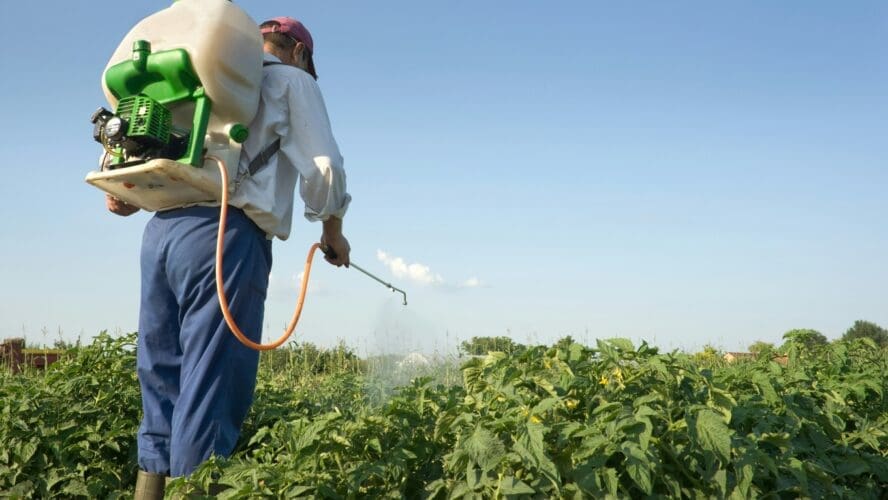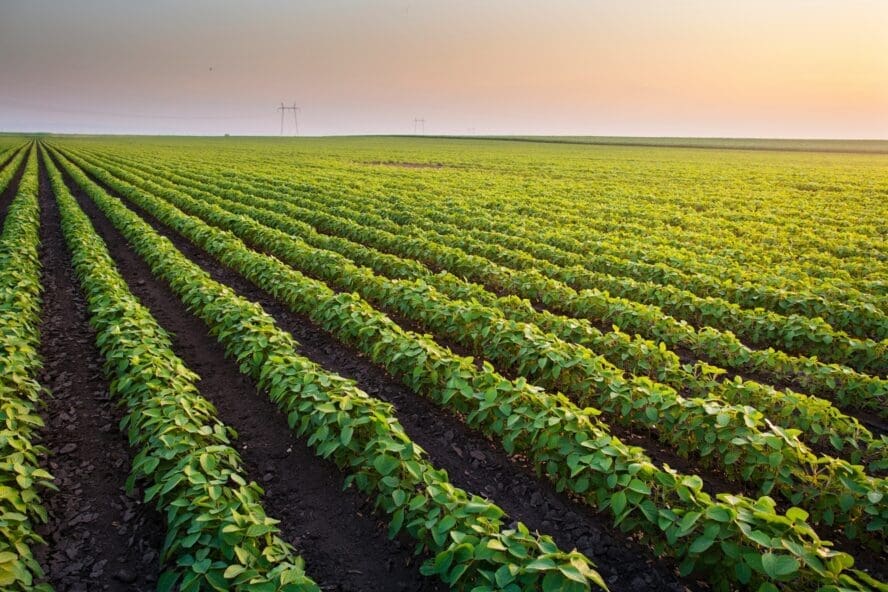The Herbicide Dicamba Is Dangerous — But the EPA Plans to Reapprove It
The chemical’s drift is characterized as “the worst of any herbicide in the history of U.S. agriculture.”

The EPA announced plans late last month to reapprove three formulations of dicamba for use on soy and cotton that’s been genetically modified to resist the dangerous herbicide. The chemical was previously banned by two different federal courts in 2020 and 2024 due to its devastating propensity for drifting onto non-resistant crops — so what’s changed?
What Is Dicamba?
Dicamba is a selective herbicide that targets broadleaf weeds among agricultural crops. By mimicking plant hormones, it triggers uncontrolled growth in susceptible weeds and eventually causes them to die out. This makes it an effective herbicide, but it can also damage trees, crops, and other non-target plants in its vicinity.
In the nearly 60 years since it was first introduced onto the market, dicamba has proven to be far more volatile than other herbicides like glyphosate (and if you don’t know what that is, check out our coverage on Monsanto’s Roundup here, here, and here).
Want more health news? Sign up for the newsletter for more well-researched, non-toxic living guidance and smart wellness advice.
Dicamba drift has damaged millions of acres of crops across the Midwest and South of the United States1. According to a press release from the Center for Food Safety and the Center for Biological Diversity, damage caused by dicamba drift is “the worst of any herbicide in the history of U.S. agriculture.2” The U.S. Department of Agriculture estimates that up to 15 million acres of soybeans were damaged by dicamba drift in 2018 alone3.

The New EPA Dicamba Proposal
After already having banned the herbicide (not once, but twice!), the EPA is now making efforts to get dicamba back in use.
“Trump’s EPA is hitting new heights of absurdity by planning to greenlight a pesticide that’s caused the most extensive drift damage in U.S. agricultural history and twice been thrown out by federal courts,” says Nathan Donley, environmental health science director at the Center for Biological Diversity.
Even worse, the EPA’s new proposal would make the use of dicamba less regulated than before. The proposed decision would eliminate the application cutoff of June 12th — a date suggested by dicamba companies themselves when applying for reapprovals in 2024.
The proposal would also drop time-of-day restrictions, which were proposed to reduce dicamba’s infamous volatility. These measures would be replaced with proposed temperature cutoffs of 95 degrees and limited drift buffers. The problem? Both of these restrictions have been attempted in the past, and both failed to prevent drift.
This announcement was made less than a month after Kyle Kunkler, a former lobbyist for the American Soybean Association, began work as deputy assistant administrator for pesticides in EPA’s Office of Chemical Safety and Pollution Prevention. The ASA has been a vocal proponent of dicamba, despite damage to non-GMO soybean fields. The 30-day public comment period for the EPA’s new plan expires on August 22nd.
The Health Risks of Dicamba
To add to the irony, the EPA proposal comes after a recent report by the Make America Health Again Commission linked pesticide use to increased risk of cancer and other diseases. A 2020 study in the International Journal of Epidemiology showed that dicamba use was associated with increased risk of liver and intrahepatic bile duct cancers3. While the EPA acknowledges the risks to plants, it doesn’t recognize the human health risks of dicamba.
Dicamba was first introduced onto the marketplace in 1967, and by 1969, a study in Weed Science had already indicated the likelihood that “vapor drift into nearby soybean fields might seriously damage soybeans.4”

In 2016, following the rise of glyphosate-resistant strains of soybeans and cotton, Monsanto, now Bayer, released seeds designed to withstand “over-the-top” (OTT) use of dicamba. Within a year, state agriculture departments reported 2,708 official crop injury investigations, and threats to pollinators like monarch butterflies and rusty-patched bumblebees were soon identified.
Soon thereafter, ammonia compounds called amines were added to dicamba formulations in an effort to reduce volatility, but a 2022 study in Environmental Science & Technology found that the amines oxidized in the air, forming carcinogenic nitrosamines and nitroamines5.
A 2021 investigation found that dicamba’s original approval excluded important scientific evidence of the herbicide’s propensity for drift, and a 2020 federal court decision vacating the EPA’s dicamba registration noted that the agency had failed to examine the ways in which “dicamba use would tear the social fabric of farming communities.”
Read More on Organic Authority
Sources:
- https://investigatemidwest.org/2020/12/04/buy-it-or-else-inside-monsanto-and-basfs-moves-to-force-dicamba-on-farmers/
- https://biologicaldiversity.org/w/news/press-releases/trump-epa-announces-plan-to-reapprove-dangerous-drift-prone-pesticide-dicamba-2025-07-23/
- https://pmc.ncbi.nlm.nih.gov/articles/PMC7660157/
- https://www.jstor.org/stable/4041262
- https://pubs.acs.org/doi/10.1021/acs.est.2c03740

